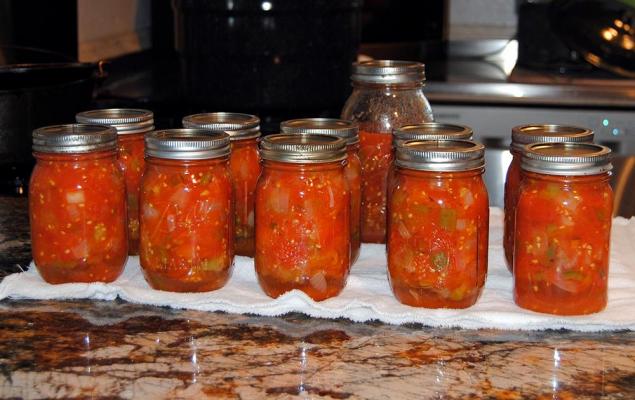Preserve Your Garden's Bounties
If you can buy it like that in the store, you can preserve it like that at home! That’s the guideline for home preservation. The biggest difference in home preserved and store-bought food is that instead of metal cans, you use glass jars at home. The best difference is that you know exactly what is in your food and what isn’t.
May and June are our big months for preserving our garden bounties. The ways you preserve your food will depend on what you are preserving and what equipment you have. The most basic way to preserve food is to freeze it. The most basic way to freeze is to put your surplus in a gallon freezer bag and throw it in the freezer.
Blanching means dipping vegetables in boiling water for a couple of minutes. It’s best to blanch most foods before freezing them because blanching kills most of the enzymes that accelerate decomposition. The next level of freezing is to use a vacuum sealing machine to vacuum seal blanched vegetables. Vacuum sealed veggies can be kept frozen for two or three years. If you think about all of the stuff on the frozen food isle in the grocery store, that’s the stuff you can freeze at home. This year we are going to try freezing french fries at home.
The next level of home food preservation is home canning. Canning at home is something that people have been doing for centuries. Mason jars are simply glass jars with a screw on lid; they were invented in 1858. I have some mason jars from my great-grandmother that were made in Oklahoma in 1929.
My great-grandmother’s jars live in a glass front case in the pantry. It’s interesting to me to think about those jars making it through the Great Depression, World War II, and everything since then.
There are two ways to can food. The simplest is water bath canning. You use water bath canning to preserve foods that are high in acid and/or sugar, such as tomatoes, pickles, and jellies.
Water bath canning heats the food in the jars to kill the enzymes that decompose the food, then the cooling of the jars creates a vacuum seal on the food.
The other canning method is pressure canning which requires a pressure canner.
There is a myth that this is dangerous because they explode. They used to. These days, pressure canners have a weight that releases pressure over about 12 psi, plus a rubber pressure release plug designed to pop out at about 15 psi. They also feature a pressure gage so that if you build up too much pressure you will know it. Most of the time you pressure can at 10 to 11 psi. I suppose that if you did several things wrong and didn’t pay attention to the pressure gauge and you held your eye over the pressure release, you could put your eye out. Otherwise, pressure canning is very safe. You pressure can foods low in sugar and acid such as beans, meats, and carrots.
The final way to preserve foods at home is to dry or dehydrate them. This year we will start on our dehydrating adventures. When I think about dehydrated foods in the store, the first thing that comes to mind is dried pinto beans. The second thing I think about is the dehydrated potatoes in Hamburger Helper.
I hope that your garden gives you extra this year. When it does, think about how you buy that food in the store, and that’s how you can preserve it for later.
Keep on growing!
Geary Hare of Edna is an avid gardener. For questions, contact Geary at ghare@msn.com

